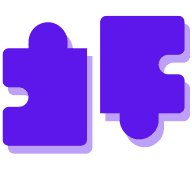21 Unconventional Resources that Helped Me Achieve My Life Goals
Discover unconventional resources that can propel you towards your life goals. This article unveils 21 unique strategies, backed by insights from experts across various fields. From harnessing the power of coffee shop conversations to creating vision boards for aesthetic goals, these innovative approaches offer fresh perspectives on personal growth and achievement.
- Tap Into Coffee Shop Conversations
- Create Space for Emotional Stillness
- Apply Wrestling Mindset to Entrepreneurship
- Gamify Goals with Habit-Tracking Apps
- Harness Global Artisan Networks
- Practice Structured Reflection in Motion
- Leverage Virtual Communities for Insights
- Use Data Recovery Principles for Goals
- Employ Commitment Contracts for Motivation
- Script Your Future in Detail
- Transform Scarcity into Business Advantage
- Empower Clients Through Educational Workshops
- Embrace Reverse Mentorship for Growth
- Integrate Journaling with Physical Therapy
- Pilot Ideas with Small-Batch Testing
- Reverse-Engineer Search Console Data
- Simulate Cyber Threats for Better Security
- Walk Neighborhoods to Understand Needs
- Sync Workout Music for Motivation
- Record Audio Notes for Self-Guidance
- Create Vision Boards for Aesthetic Goals
Tap Into Coffee Shop Conversations
The unconventional strategy that shaped my path as a business consultant was tapping into local coffee shop conversations to uncover real-world business challenges. I stumbled upon this years ago, overhearing a bakery owner at a cafe lament rising flour costs and delivery delays. Chatting with her, I realized these raw, unfiltered talks revealed practical pain points far more vivid than any boardroom report, guiding me to craft strategies that actually worked for clients.
Running a boutique consulting firm, I saw how small business owners wrestled with global supply chain snags or shifting customer habits. Sitting in cafes, I'd hear stories like a retailer struggling with online sales after a social media algorithm change and weave those insights into tailored financial or sales plans. A client, Mike, a gym owner, credited my advice on flexible memberships, sparked by a barista's gripe about rigid contracts, for doubling his revenue. This approach grounded my expertise in the messiness of daily life.
For those chasing unique paths, my advice is to seek out the unpolished voices in your community cafes, markets, wherever people vent. You'll find raw truths that sharpen your perspective when you lean into casual, human exchanges. Dive into these spaces with curiosity, and let the stories you hear steer your solutions toward what people truly need.
This habit keeps my work sharp, human, and effective, cutting through the noise of polished data. A florist once shared how weather spikes wrecked her inventory, inspiring a risk plan that saved her shop. What this means for you is simple: listen to the world around you; those unscripted moments hold the keys to solving problems and reaching your goals.

Create Space for Emotional Stillness
One unconventional strategy that has had a deep impact on my life is creating space for silence. Not just physical quiet, but true emotional stillness. In a world that's always pushing us to do more, achieve more, and stay constantly connected, I found that stepping away from all the noise helped me come back to myself.
I discovered this during a season where I was balancing a lot—being a mother, a wife, a therapist, and an active member of my Orthodox community. I was doing everything I thought I was supposed to, yet something inside felt off. I remember one Shabbat afternoon, I finally let myself sit without any distractions. No book, no phone, no task list. Just stillness. At first, it felt uncomfortable, like I should be doing something. But slowly, I began to crave that quiet. It became a space where I could reconnect with Hashem, with my own needs, and with the questions I hadn't taken the time to ask myself.
This isn't about disappearing into solitude for hours. It's as simple as giving yourself ten quiet minutes with a cup of tea. Let the silence speak. Ask yourself, "What have I been too busy to hear?" Because sometimes, the most powerful answers don't come from outside resources—they come from within, when we're finally quiet enough to listen.
If you're looking for something different to guide you, I'd start there. Trust that soft, steady voice inside. It usually knows the next right step.
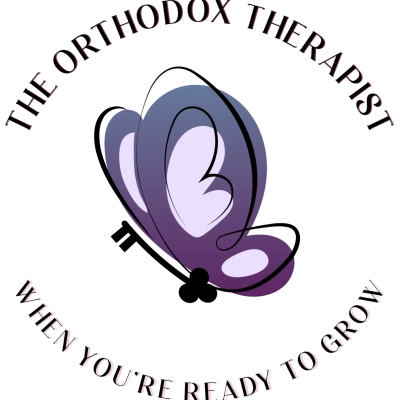
Apply Wrestling Mindset to Entrepreneurship
Wrestling has been my unconventional secret weapon for achieving goals since I was just 4 years old. What started as a family tradition spanning three generations evolved into a mindset framework that's powered everything from my time as a D1 athlete at UVA to building multiple successful companies.
The wrestling mat teaches three critical pillars that few other environments can match: focus, discipline, and consistency. In wrestling, there's nowhere to hide and no teammates to pick up your slack. You either put in the work or you don't – and the results reflect that reality immediately.
I discovered this resource organically through the sport, but the profound impact didn't fully click until I started building businesses. The same mental framework that helped me push through grueling practices and competitions became my entrepreneurial operating system. Whether I'm connecting eCommerce brands with the perfect 3PL partner at Fulfill.com or navigating the challenges of scaling operations, these principles keep me grounded and effective.
My advice for anyone seeking unique approaches to achieving goals? Find an arena that forces you to develop mental toughness through consistent, focused effort over time. For me, it was wrestling, but it could be martial arts, endurance sports, chess, or even musical mastery. The specific activity matters less than the mental frameworks it builds.
The magic happens when you can extract the principles from one domain and apply them elsewhere. That transfer of mental models is where true competitive advantage lies. Don't just pursue activities – actively identify the underlying principles making you successful, then deliberately apply them to your biggest goals. That translation process is where most people miss the opportunity.
Gamify Goals with Habit-Tracking Apps
I discovered Habitica, a free, open-source habit-tracking app that turns your to-do list into a role-playing game. Initially skeptical, I created an account, transformed my morning run, daily writing goal, and weekly networking coffee into "quests," and invited two friends to join my "party." Logging those tasks as XP rewards kept me excited to check off even the smallest action. Within three months, I'd not only hit my goal of drafting 1,000 words each weekday (enough to finish my e-book outline) but I'd also run a 5K every other morning.
My advice for anyone seeking unconventional strategies is to look for solutions that align with your natural tendencies. Start by identifying one habit you've been stubbornly unable to stick with, turn it into a "quest" in a tool like Habitica (or even a simple spreadsheet with XP points), and loop in an accountability partner or two. That element of play transforms discipline from a chore to a choice, and it might be the unique nudge that finally gets you across the finish line.
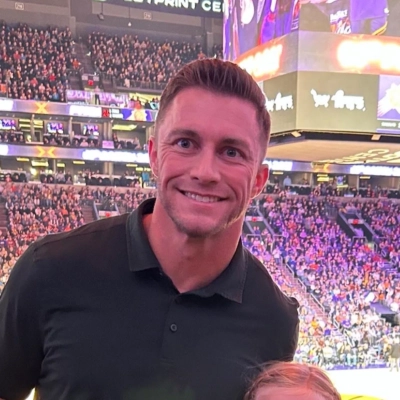
Harness Global Artisan Networks
The unconventional strategy that transformed my journey with Tied Sunwear is harnessing the power of global artisan networks to craft our sun-healthy beachwear. As a 28-year-old co-founder from Chicago, I stumbled upon this approach while researching fabric suppliers in South Korea, a hub for advanced UPF technology. Connecting with skilled weavers there, I learned how their expertise could create lightweight, chemical-free fabrics with a UPF 50+ rating, blending style and sun safety seamlessly.
Starting Tied Sunwear, my sister and I faced the challenge of making sun-protective clothing fashionable. Traditional options felt stiff and uninspiring, but South Korean artisans showed us how tight weaves and soft fibers could feel luxurious while blocking 98% of UV rays. A customer, Sarah from Miami, raved about our cover-up's cooling effect during her beach vacation, saying it kept her comfortable and confident. These partnerships allowed us to design pieces that women love to wear, not just need to wear.
My advice for those seeking unique approaches is to look beyond local resources and tap into global communities with specialized skills. When you want to elevate your vision, you'll find artisans or experts worldwide who can turn ideas into reality. Research niche markets, like South Korea's sun protection expertise, and build relationships to create something truly special. This strategy helped us stand out in the crowded beachwear market.
Our UPF 50+ designs, like flowy tunics or chic rash guards, fit effortlessly into beach days or resort getaways. Women like Lisa, a Chicago nurse, shared how our soft, non-restrictive swim leggings made her feel protected and stylish during a family lake trip. By blending global craftsmanship with fashion, we empower women to embrace sun safety with confidence.

Practice Structured Reflection in Motion
Honestly, one of the most unconventional resources that has consistently helped me achieve both personal and professional goals has been structured reflection time—but done in motion. I used to think sitting still was the only way to properly think things through. Then, during a particularly intense period at Spectup when we were pivoting our service structure, I started taking long walks without any devices—just a pen and a small notepad. That's when my best ideas started surfacing. It felt like the movement cleared space in my head for clarity to sneak in.
I discovered this out of necessity. We were overloaded with client work, investor expectations were growing, and I needed a way to think beyond the daily grind. One day I walked for two hours straight and came back with the framework that became our venture scout program. No screens, no inputs—just output. If you're looking for a unique approach, I'd say: stop chasing the next tool or productivity hack and create conditions where your brain can finally breathe. Don't underestimate what happens when you let your thoughts wander on purpose. It's simple, a bit weird at first, but ridiculously effective.

Leverage Virtual Communities for Insights
The unconventional resource that has been instrumental in achieving my life goals is leveraging virtual communities of entrepreneurs on platforms like X to crowdsource real-time business insights. As the founder of a bookkeeping business in Boston, I discovered this strategy by joining online discussions where small business owners shared their financial pain points. These conversations revealed practical needs like simplifying tax prep or streamlining monthly reports that shaped my services. Engaging directly with these communities helped me tailor solutions, like real-time bookkeeping updates, that truly resonate with clients.
When I started my business, I noticed many entrepreneurs were overwhelmed by tax deadlines and disorganized financial records. By participating in these virtual forums, I learned how to address those struggles with clear, reliable bookkeeping systems. For example, one client, a local e-commerce owner, shared in a community post how my team's monthly reports helped them spot overspending early, saving thousands. This approach not only refined my services but also built trust with clients who felt heard and understood.
My advice for someone seeking unique approaches is to immerse yourself in the spaces where your audience lives, whether that's online forums, social media groups, or industry chats. When you need fresh perspectives, you'll find honest feedback from those facing real-world challenges. Listen closely to their struggles, then build solutions that directly address those needs. This method keeps your approach grounded and adaptable, ensuring you're solving actual problems.
This strategy works because it's not just about offering a service; it's about understanding the chaos business owners face. For instance, a startup founder I connected with online was juggling multiple roles and dreading tax season. We created a customized tax prep plan that saved them hours, which they later praised in a community post. By staying engaged in these virtual spaces, I've been able to innovate services that make bookkeeping seamless, letting clients focus on growing their businesses.

Use Data Recovery Principles for Goals
The "Digital Archaeology" Mindset: How Data Recovery Principles Transformed My Approach to Life Goals
As CTO of DataNumen, I've spent years perfecting the art of recovering what others consider permanently lost. The unconventional strategy that revolutionized my approach to achieving life goals came from applying data recovery principles to personal and professional challenges.
In data recovery, we never accept that something is truly "gone forever." We methodically examine fragmented pieces, look for patterns in seemingly corrupted information, and reconstruct complete pictures from partial data. This mindset became my secret weapon for tackling ambitious goals that initially seemed impossible.
When I set out to build DataNumen into a leading data recovery company, the market was saturated with established players. Instead of seeing this as a dead end, I applied our core recovery principle: look for the overlooked fragments. I analyzed failed competitors, studied abandoned market segments, and pieced together insights that others had dismissed as irrelevant. This "digital archaeology" approach revealed untapped opportunities in specialized file formats and niche recovery scenarios.
The breakthrough came when I realized that most people abandon their goals at the first sign of "corruption" - whether that's initial failure, resource constraints, or market rejection. But in data recovery, the first scan failure is just the beginning. We use multiple algorithms, different approaches, and progressive reconstruction techniques.
My advice for anyone seeking unique approaches:
1. Embrace the "partial recovery" mindset - Progress doesn't have to be perfect or complete to be valuable.
2. Study the "deleted files" in your field - What has everyone else given up on that might still contain recoverable value?
3. Use iterative reconstruction - Build your goals piece by piece, just like recovering a corrupted hard drive.
This unconventional strategy has helped me recover not just data, but opportunities, relationships, and seemingly impossible projects. Sometimes the most powerful resources are hiding in plain sight, waiting for someone with the right recovery mindset to bring them back to life.
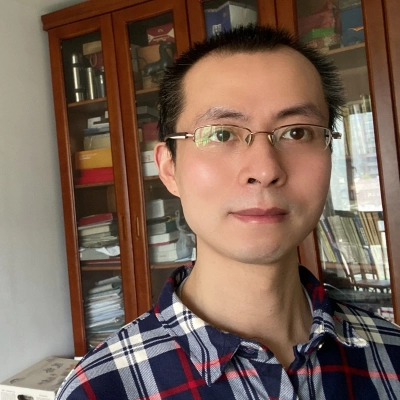
Employ Commitment Contracts for Motivation
When I stalled on finishing my first draft of a book last year, I turned to a commitment-contract platform called StickK. I wagered $10 each week to a charity I'm not fond of if I didn't hit my 500-word daily goal, and that little threat of loss got me typing on mornings I'd otherwise hit snooze. I stumbled upon it after reading about behavioral economics in Richard Thaler's book "Nudge" and realized I needed more than willpower.
That setup didn't just get words on the page; it rewired my habit loop around writing. My advice? Pick one goal, find a commitment partner or platform that holds real stakes, and attach your progress to something you want to avoid losing. The right contract can turn your vague intentions into non-negotiable actions.

Script Your Future in Detail
One unconventional resource or tool that has shaped my life is a single Google Doc where I script my future in vivid detail. This document includes goals, feelings, and timelines, all written in the present tense. I review it weekly. It's not magical thinking; it's intentional focus. Writing forces clarity, and repetition builds belief. I discovered this technique via a podcast about mental rehearsal in elite sports.
My advice: Don't just list goals, narrate them. Make them emotional. Make them real. When you treat your future like a draft you're constantly editing, you stay aligned with it and motivated to live into it.

Transform Scarcity into Business Advantage
A helicopter ride changed my career—because I was not the one taking it; I was the one selling it.
After I burned out building a tech startup that never gained financial traction, I did not "pivot" in the Silicon Valley sense. I downgraded. I started selling helicopter rides in Mexico City—just a few a year at first. But I discovered something counterintuitive: I could add value by applying digital transformation skills to a traditional, luxury service like private aviation, far beyond what algorithms could do alone.
What mattered was not raising capital or creating an app. It was leveraging scarcity.
Private aviation is limited by nature: there are only so many aircraft, so many pilots, so many airspace opportunities. The limitation became my greatest advantage. Rather than pursue infinite scale, I built my business around rare experiences. Helicopter rooftop landings in Mexico City (which are banned in most U.S. cities). Proposals above the pyramids. Last-minute charters that saved time over the traffic of a 25-million-person metropolis.
If you're looking for outlier strategies, forget about trends. Ask yourself: what scarce experience can you enable, amplify, or distribute in a better way than anyone else? In my case, scarcity was not a barrier. It became my moat.
Now, I sell less—but I make more and, more importantly, I create experiences that people remember.
Empower Clients Through Educational Workshops
When a homeowner, stressed about a leaking faucet, shared how helpless she felt not understanding her home's plumbing, I was inspired to take action. By teaching her simple fixes in a workshop, I helped her gain confidence, and it inspired me to make these sessions a core part of my business, building trust and connection with clients.
Starting Proven Plumbing LLC, I noticed many clients felt overwhelmed by plumbing issues, fearing costly repairs or unreliable service. These workshops, paired with our expert services like drain cleaning or water heater installations, demystify plumbing and show clients we care beyond the job. A small business owner, Tom, shared how learning to spot pipe issues early saved his shop from major water damage, praising our hands-on guidance.
My advice for those seeking unique approaches is to educate your audience in ways that build their confidence. When you want to stand out, you'll find teaching practical skills creates lasting relationships and trust. Look for ways to empower your clients with knowledge that complements your expertise, making your service feel more personal and impactful.
A family, the Garcias, said our workshop helped them maintain their home's plumbing, avoiding emergencies and stress. By blending community education with reliable solutions, we ensure clients feel secure, supported, and ready to tackle plumbing challenges with peace of mind.

Embrace Reverse Mentorship for Growth
One of the unconventional strategies that has helped me achieve my life goals is "reverse mentorship"—learning from people younger or less experienced than me, especially in areas like technology, culture, and emerging trends.
I stumbled upon it by accident. While mentoring a few younger colleagues, I realized I was getting as much as I was giving—new perspectives, sharper digital instincts, and a better understanding of what drives the next generation. That switched something on for me. I started actively seeking out conversations where I wasn't the expert.
What surprised me most is how much this approach helped me adapt faster, make better decisions, and stay open-minded. It also built stronger relationships and kept my thinking fresh.
My advice to anyone looking for ways to grow: Don't limit your learning to "up the ladder." Sometimes the best insights come from unexpected places. Stay curious, ask with humility, and treat every conversation as a two-way exchange. The people you least expect might have exactly the perspective you need.

Integrate Journaling with Physical Therapy
I discovered this approach when a patient, struggling with chronic back pain, revealed during a session how stress from work worsened their symptoms. By encouraging them to journal daily about their emotions and pain patterns, we tailored a rehabilitation plan that blended physical therapy with stress relief practices, leading to lasting relief.
When I founded Rehab2Wellness, I saw many clients frustrated by pain that standard treatments couldn't fully address. Journaling helped us dig deeper, revealing connections between mental stress and physical tension. A client, Maria, shared how journaling pinpointed her shoulder pain to long hours at a desk, allowing us to design a mobility routine that restored her freedom to garden. This method strengthened our holistic approach, combining therapy with lifestyle changes.
My advice for those seeking unique approaches is to explore tools that connect the mind and body to solve problems. When you want to help others heal, you'll find listening to their whole story, emotions included, unlocks powerful solutions. Try simple, reflective practices like journaling to gain insights that standard methods might miss.
A post-surgery patient, Tom, credited journaling with helping him stick to his rehabilitation plan, regaining strength to play with his kids. By blending this strategy with expert physical therapy, we empower clients to move freely and live pain-free, reclaiming their wellness with confidence.

Pilot Ideas with Small-Batch Testing
I owe a surprising amount of my career momentum to a practice I borrowed from clinicians we serve: building a "small-batch lab" for ideas. In point-of-care dispensing, we routinely test new workflows—say, swapping a PBM-tethered drug for an onsite prepack—on five patients before rolling it out clinic-wide. I applied that same micro-pilot concept to life goals: when I considered pursuing an MBA, I created a 30-day sprint where I tracked time, cost, and stress exactly as if I were already enrolled. The data showed the investment worked only if I could integrate automated tools—just as our barcoded dispensers shave minutes off each prescription.
My advice? Treat big ambitions like an in-clinic formulary change: pilot on a scale so small that failure is cheap, measure relentlessly, then expand once the numbers mirror success. The discipline you'll build echoes the efficiency we see when practices keep medications onsite—shorter wait times, clearer costs, and tighter control all the way to the finish line.

Reverse-Engineer Search Console Data
Google Search Console's "Performance" report became my secret weapon when I started analyzing it backwards—instead of looking at what keywords I'm ranking for, I study what I'm NOT ranking for but should be. This reverse-engineering approach revealed content gaps that competitors missed entirely, leading to some of my biggest SEO wins. I discovered this method during a particularly frustrating audit where traditional keyword research wasn't revealing opportunities, so I flipped the script and examined search queries where we appeared on page 2-3 but had relevant content.
At Scale by SEO, we help businesses rank higher, get found faster, and turn search into growth by finding these hidden opportunities that most agencies overlook. The key is treating your existing data as a treasure map rather than just a report card—every "almost ranking" keyword is a potential goldmine waiting to be optimized.
Simulate Cyber Threats for Better Security
I discovered this approach when a small business owner, panicked after a near-miss phishing attack, admitted they didn't know how to spot fraudulent emails. By running tailored simulations, I helped their team learn to identify suspicious messages, boosting their confidence and reducing their vulnerability to scams.
As a cybersecurity advisor, I've seen businesses paralyzed by the fear of email threats like spoofing or fraud. These exercises, combined with EmailGuard's robust tools for threat detection, empower clients to take control of their security. A client, Sarah, who runs a mid-sized retail company, shared how our simulations caught a weak spot in her team's habits, preventing a potential data breach. This hands-on method builds trust and practical skills that go beyond technical fixes.
My advice for those seeking unique approaches is to create engaging, real-world learning experiences for your audience. When you aim to solve complex problems, you'll find interactive tools like simulations make abstract challenges tangible. Focus on methods that blend education with action to drive meaningful results.
A local nonprofit, guided by our simulations, avoided a costly fraud attempt, with their director praising our clear, empowering approach. By merging this strategy with expert solutions, we ensure businesses communicate securely, protecting their operations and peace of mind.

Walk Neighborhoods to Understand Needs
When a frustrated client invited me to stroll down his street, pointing out patchy lawns and yellowing grass, it sparked honest conversations about their struggles. These walks allowed me to see soil conditions firsthand and build trust, shaping tailored fertilization and mowing plans that transformed yards.
Starting GreenAce, I knew unkempt lawns stressed out homeowners, especially those wanting to impress their neighbors without overspending. By walking their blocks, I heard stories like Sarah's, who was embarrassed by her weedy front yard until our eco-friendly fertilizer revived it in weeks, earning her compliments. This hands-on method, rooted in my dad's 30 years in the business, lets me craft solutions that make lawns thrive and clients proud.
For those seeking unique approaches, I'd say get out and meet your community where they live. When you want to solve real problems, you'll find direct, face-to-face engagement reveals needs no survey can uncover. Wander, listen, and let those insights guide your work - it's how you make a lasting impact.
A local HOA president, Tom, said our lawn walk led to a mowing schedule that turned his community's entrance into a showpiece. At GreenAce, we blend these neighborly insights with soil science to give you a vibrant, envy-worthy lawn in just 12 weeks.
Sync Workout Music for Motivation
When I noticed how music shifted the mood during our early strength classes in Chicago, turning hesitant participants into motivated movers. By selecting songs that sync with workout phases - uplifting for cardio, grounding for recovery - we created an immersive experience that keeps clients engaged and coming back.
Starting Studio Three, I saw many people overwhelmed by rigid fitness routines that felt isolating. Our playlist strategy, paired with expert-led strength, cardio, and recovery sessions, builds a sense of community and purpose. A client, Jenna, shared how a perfectly timed song during a tough interval class pushed her to finish strong, sparking her confidence to train for a 5K. This approach makes workouts feel personal, even in a group setting.
My advice for those seeking unique approaches is to tap into sensory elements, like music, to deepen engagement in your work. When you're looking to inspire others, you'll find small touches that resonate emotionally can transform their experience. Experiment with details that align with your audience's needs to create moments that stick with them.
A busy dad, Mark, said our recovery class playlists helped him unwind and recommit to his wellness goals. By blending this strategy with our holistic programs, we empower everyone from beginners to athletes to move, connect, and thrive in a supportive, vibrant community.
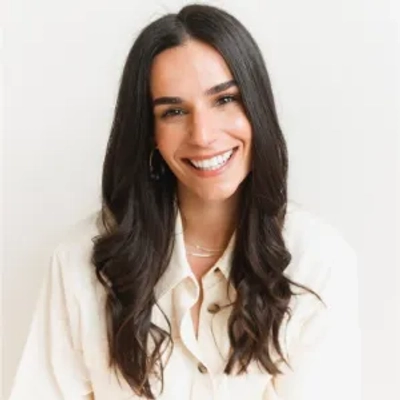
Record Audio Notes for Self-Guidance
An unconventional strategy that worked effectively for me was to record audio notes for myself. This began when I felt overwhelmed by handling numerous client cases, making it challenging to do my daily journaling. So, I decided to start recording short thoughts and pep talks when things seemed rough.
Listening to the recordings offered incredible comfort, insights, and healing, as if my future self were guiding my current self. I still use this method and recommend it to my addiction recovery clients and anyone seeking unique ways to express themselves or get internal motivation. Your voice is raw, reliable, and ever-present.

Create Vision Boards for Aesthetic Goals
We are using personalized client vision boards to guide aesthetic treatments. I discovered this approach when a patient struggled to articulate her goals for facial rejuvenation, so we created a visual collage of her desired look, blending images of natural beauty and subtle enhancements. This tool helped us align her Botox and dermal filler treatments with her vision, ensuring results that felt authentic and boosted her confidence.
At Lumi Aesthetics, many clients come in wanting to enhance their appearance but feel nervous about looking "overdone." The vision board process, paired with our non-invasive treatments like microneedling or CoolSculpting, allows us to tailor plans precisely. A client, Sarah, shared how her vision board led to a lip enhancement that felt like "her, but better," making her feel radiant at a big work event. This strategy transforms consultations into collaborative, empowering experiences.
My advice for those seeking unique approaches is to find creative ways to deeply understand your clients' desires. When you want to deliver meaningful results, you'll find tools like vision boards can bridge emotional needs with practical solutions. Experiment with visual or interactive methods to clarify goals, ensuring your work resonates on a personal level.
A busy mom, Lisa, praised how her non-surgical facelift, guided by her vision board, restored her glow without downtime. By blending this creative strategy with advanced techniques, we help clients achieve natural, confidence-boosting results in our luxurious, comforting environment.


